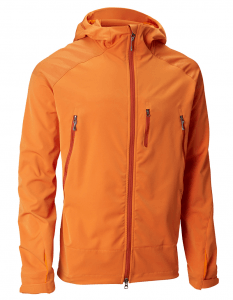If you are going to be using the soft shell predominantly in autumn and in winter, buy a model with a thicker lining that is 100% percent windproof. Materials that do not completely block the wind (eg Polartec Powershield Light and Scholler Dryskin) provide more breathability during high-intensity activities. Other aspects that are important in choosing a soft shell are:
Details
The softshell should have at least two pockets, which should be accessible even if the hip strap of your backpack is fastened. The collar should feel soft and should preferably be adjustable with a drawstring. Ventilation apertures or pockets with netting provide the necessary ventilation, just like adjustable cuffs.
Fit
Ideally, the soft shell is like a second skin: the less you feel it, the better. When you try one on you can test the fit with the following simple tests. Stretch your arm upwards with the zipper closed. When you do that, the hip strap of your backpack should not slide upwards. When you bend your elbows, the fabric should not get too tight. Finally, stretch your arms in front of you and make sure the sleeves are long enough.
Hood
A hood keeps your head dry and also warm in low temperatures. The disadvantage is that a softshell with a hood will weigh more and the collar will feel a little less soft. If you do take a hardshell along you wouldn’t need a hooded soft shell.




